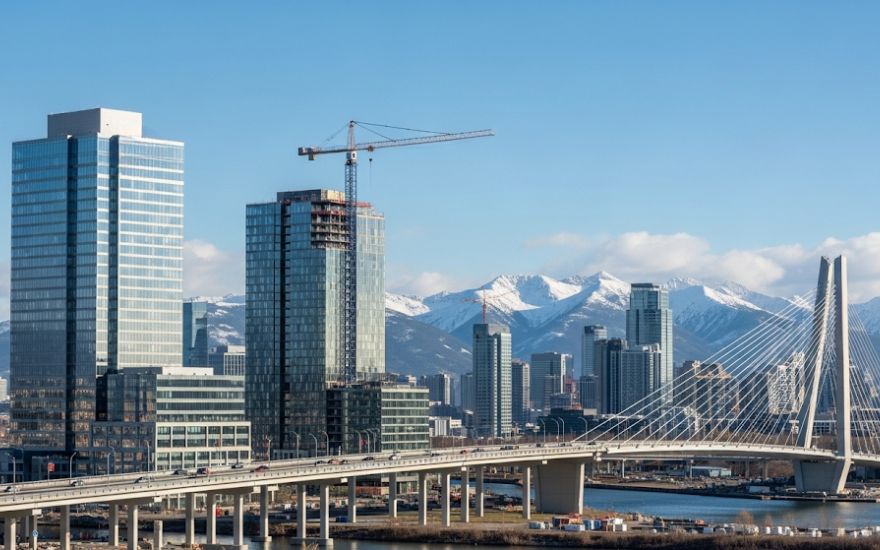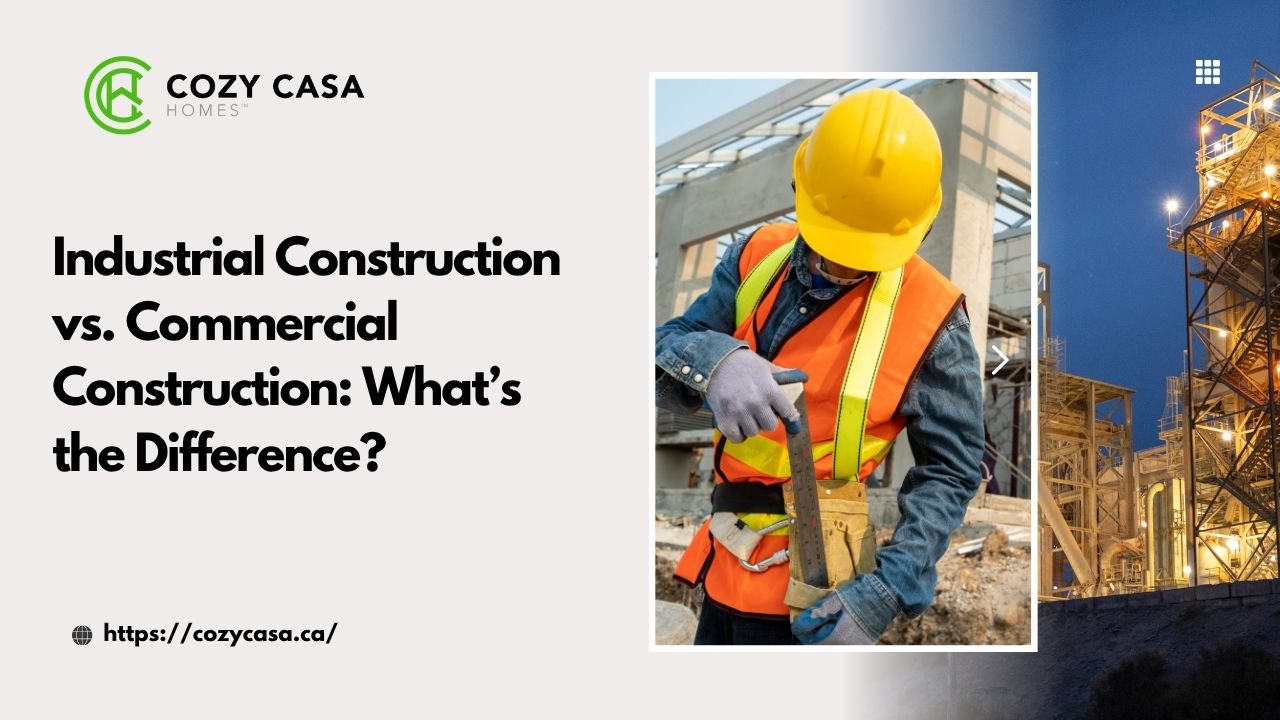PCL Construction is a name that resonates across the Canadian construction industry. Whether you’re a budding contractor, a real estate investor, or someone curious about the leaders shaping the skyline, understanding PCL Construction’s role is a must. With over a century of operation and numerous high-profile projects under its belt, PCL has become synonymous with excellence, innovation, and community-building in Canada’s infrastructure space. But what sets them apart from the competition, and why should you pay attention to their work?
This blog dives deep into the top 10 insights about PCL Construction in Canada. From their roots and core values to sustainability efforts and industry leadership, we offer a comprehensive view of what makes PCL one of Canada’s top construction firms. If you’re considering working with them or simply exploring industry leaders, this guide will motivate you to make informed decisions. Discover how CozyCasa partners with or learns from such industry giants here.
Key Things to Know Before Exploring PCL Construction Insights
Understanding PCL Construction’s impact and operations requires a foundation in several critical factors. Before diving into the top insights, it’s essential to grasp who they are, the scale at which they operate, and the principles they adhere to. These elements will frame the deeper points we’ll cover next.
History and Founding of PCL Construction
PCL Construction was originally founded in 1906 in Stoughton, Saskatchewan. It has since evolved into a group of independent construction companies that operate across Canada, the United States, and Australia. Over the decades, it has built a legacy of reliability, earning a solid reputation for completing projects on time and within budget. The company’s long-standing presence also speaks volumes about its ability to adapt to changing market conditions and construction technologies.
Their journey from a small-town builder to a multinational construction powerhouse showcases the firm’s resilience and ambition. Understanding this historical context helps you appreciate why PCL holds such a strong foothold in Canada’s construction sector.
PCL’s Ownership Structure and Culture
One of the unique aspects of PCL Construction is its 100% employee-owned structure. This ownership model fosters a deep sense of responsibility and commitment among its workforce. Employees are more than just staff; they are stakeholders in the company’s success. This results in higher morale, better project outcomes, and an internal culture built on mutual respect and ambition.
This ownership structure is not just a formality—it’s integral to how the company operates daily. The employee ownership model encourages innovation, collaboration, and a client-first mindset, all of which are crucial for maintaining excellence in construction services.
Core Values That Drive PCL Construction
PCL Construction is driven by a clear set of core values: honesty, integrity, and respect. These values are not just marketing jargon—they are deeply embedded into every project and every interaction with clients and partners. They also align with a broader commitment to health, safety, and environmental stewardship.
Clients working with PCL often cite these values as key reasons for repeat business. A company that places this kind of emphasis on ethics and quality builds long-lasting trust with its stakeholders, making them a preferred partner for projects of all sizes.
PCL’s Diverse Project Portfolio in Canada
PCL Construction has worked on an array of landmark projects across Canada, from commercial high-rises in Toronto to healthcare facilities in Vancouver and transportation infrastructure in Calgary. This geographic and sectoral diversity ensures that the company remains resilient to market fluctuations and continues to grow.
Their ability to handle a wide variety of construction needs makes them a reliable partner for both public and private sector clients. For example, CozyCasa’s vision for community-first housing solutions finds inspiration in PCL’s approach to inclusive urban development.
Industry Recognition and Awards
PCL Construction is consistently recognized among Canada’s top employers and leading contractors. Awards for safety performance, innovation, and project excellence adorn the company’s track record. These accolades serve as third-party validations of PCL’s credibility and reliability.
Such recognition is not just about prestige—it reflects a systematic focus on quality assurance and continual improvement. For stakeholders considering collaboration or investment, these awards can serve as important trust signals.
Top 10 Insights About PCL Construction in Canada
1. Commitment to Sustainability and Green Building
PCL Construction has made sustainability a cornerstone of its business strategy. The company actively incorporates green building practices, such as LEED-certified projects and carbon-reduction measures, into its work. They also invest in technologies that improve energy efficiency and reduce environmental impact.
This dedication to sustainable construction not only meets modern regulatory standards but also aligns with growing client demands for eco-conscious solutions. For organizations with ESG goals, PCL represents a reliable partner who shares similar values.
2. Innovation Through Technology Adoption
Innovation is a key driver behind PCL’s enduring success. They leverage cutting-edge tools like Building Information Modeling (BIM), drone mapping, and cloud-based project management systems to enhance accuracy, reduce delays, and improve communication.
Such forward-thinking approaches help streamline complex projects and reduce waste. It’s also a significant advantage in today’s fast-paced construction environment, where delays can result in costly overruns and dissatisfied clients.
3. Emphasis on Worker Safety and Training
Safety is more than a checklist at PCL Construction—it’s a company-wide commitment. They invest heavily in safety training programs, routine inspections, and performance audits to ensure a zero-incident workplace.
A strong safety record enhances workforce morale and reduces insurance costs. It also minimizes project delays and legal risks, making PCL a dependable choice for high-stakes construction endeavors.
4. Community Engagement and Social Responsibility
PCL actively contributes to the communities where it operates. Through charitable initiatives, local hiring, and infrastructure development, the company ensures its presence benefits more than just the project stakeholders.
This social responsibility extends to partnerships with educational institutions and support for local businesses, enhancing community cohesion and long-term value.
5. Versatility in Service Offerings
From general contracting and design-build to integrated project delivery and preconstruction services, PCL covers a full spectrum of construction needs. Their flexible service model allows them to tailor solutions based on the unique requirements of each client.
This adaptability makes them suitable for a range of clients—from government bodies to private developers. It also demonstrates their holistic understanding of the construction lifecycle.
6. Employee Development and Retention
PCL believes in investing in its people. The company offers mentorship programs, professional development courses, and upward mobility opportunities to ensure long-term employee satisfaction and growth.
This focus on people translates into low turnover rates and a highly experienced workforce—key indicators of a company that values and retains talent.
7. Strong Financial Performance
Financial stability is a critical measure of a company’s reliability. PCL consistently ranks among Canada’s top revenue-generating construction firms. Their strong financial foundation allows for greater investment in innovation and better risk management.
Clients can be assured that PCL has the resources to handle large-scale, long-term projects without compromising quality or timelines.
8. High Client Retention and Satisfaction Rates
Repeat clients are a testament to a company’s performance. PCL enjoys high client retention due to its consistent delivery, transparent communication, and adherence to timelines and budgets.
Satisfied clients often refer others, contributing to organic growth and a positive brand reputation. This is a powerful advantage in a competitive industry.
9. Focus on Collaborative Partnerships
PCL thrives on collaboration. They engage with architects, engineers, suppliers, and clients early in the project lifecycle to identify challenges and opportunities. This collaborative approach reduces miscommunication and leads to better outcomes.
The synergy they create with stakeholders fosters innovation and smooth execution, crucial for large-scale and complex projects.
10. Strategic Expansion and Market Adaptation
PCL is always looking ahead. Their strategic approach to market entry, diversification, and geographic expansion ensures they remain competitive and agile. They continuously evaluate emerging trends and adapt their services accordingly.
This proactive stance has allowed them to thrive in different economic climates and regulatory environments, cementing their leadership role.
Why Choose CozyCasa When Exploring Construction Options?
While PCL Construction stands as an industry leader, CozyCasa provides personalized, community-focused solutions in residential development. Our local expertise, attention to detail, and client-first philosophy offer a more intimate and tailored construction experience. We integrate insights from industry giants like PCL to inform our processes while maintaining the charm and agility of a boutique service provider.
At CozyCasa, we believe that construction should be more than just building structures—it should be about creating homes, communities, and long-term value. Our hands-on approach ensures that each project is unique and perfectly aligned with our client’s vision. Learn more about our services here.
Conclusion
PCL Construction is a paragon of excellence, innovation, and integrity in Canada’s construction landscape. From its century-long history to its forward-thinking approach and unwavering focus on sustainability and safety, PCL sets the benchmark for what construction companies can achieve. Whether you’re in the industry or simply researching potential collaborators, the insights shared here underscore why PCL remains a trusted name.
For those seeking a more personalized touch with a similar commitment to quality and community, CozyCasa offers the perfect alternative. Inspired by industry leaders and driven by local passion, we are here to build not just houses, but homes. Let’s create something lasting together.
FAQs
- What is PCL Construction known for in Canada?
PCL is known for its wide-ranging infrastructure projects, sustainability efforts, and being 100% employee-owned. - Is PCL Construction a Canadian company?
Yes, it was founded in Canada and maintains strong roots and operations across the country. - What are PCL Construction’s core values?
Honesty, integrity, and respect. - Does PCL Construction focus on sustainability?
Yes, sustainability is central to their operations, including LEED-certified projects. - Where is PCL Construction headquartered?
Their headquarters is in Edmonton, Alberta. - What makes PCL Construction’s services versatile?
They offer design-build, general contracting, and integrated project delivery. - How does PCL invest in its employees?
Through training, mentorship, and professional development programs. - Is PCL financially stable?
Yes, it consistently ranks among Canada’s top-performing construction firms. - What technologies does PCL use?
BIM, drone mapping, and cloud-based project management tools. - How does CozyCasa compare to PCL?
CozyCasa offers community-first, boutique services inspired by industry leaders like PCL.

